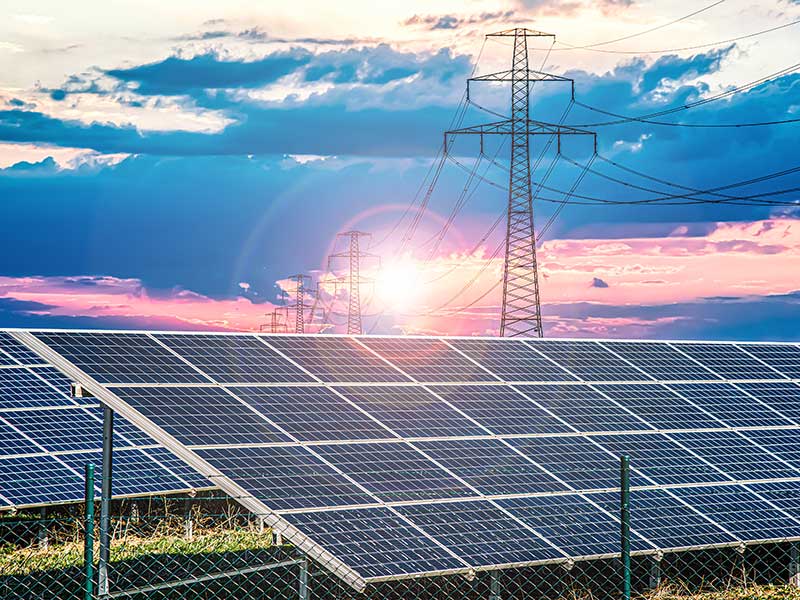How governments, companies and communities procure and consume clean energy has the potential to transform and decarbonise Australia’s National Electricity Market (NEM) electricity grid.
In the future, net zero targets will morph into ‘true zero’ ambitions, with hourly matching of carbon-free energy production to real-time energy use, allowing consumers to take real action towards eliminating (rather than offsetting) their Scope 2 carbon footprint.1
Shifting from 100 per cent annual matching to hourly matching, where every hour of electricity consumption is matched to carbon-free energy, will provide the right demand signals. Thus, hourly matching will drive faster full-scale decarbonisation of electricity grids.

In short, clean energy consumers who accurately track and trace their power’s source, price, availability and location will raise the bar to purchase 100 per cent carbon-free energy around the clock. Plus, tangible insights from energy traceability will help guide and incentivise future renewable investments and establish a data-driven renewable energy market.
There is an urgent requirement for carbon accounting enhanced by energy traceability. By educating all parties in the Australian energy market on this need, we hope to accelerate our nation’s progress to zero emissions in the truest way possible.
Acceleration towards zero emissions
Recently, after pressure from key trade partners, Australia committed to helping limit global warming to 1.5 degrees Celsius and reaching net zero emissions by 2050.
Yet, our continued reliance on carbon-emitting power generation in the next decade, and the absence of an ambitious renewable energy policy from successive federal governments, has left us with persistent challenges.
The Australian Energy Market Operator (AEMO) says Australia’s NEM has the technical capacity to (briefly) reach 75 per cent renewable penetration by 2025, but market and regulatory reforms are needed to extend such periods around the clock and across the seasons.
The key is to provide the right settings and incentives for the renewable and storage assets that ‘fill the gaps’ in otherwise intermittent supply.
While complex, the decarbonisation of electricity systems is possible; thus, sourcing clean energy should become easier and cheaper for consumers.
If consumers had a viable way to overcome today’s fluctuations in availability and use 100 per cent carbon-free energy, could this fast-track our clean energy transformation?
Issues with current renewable accounting
Under traditional arrangements, companies can claim net zero emissions by purchasing carbon offset credits or large-scale renewable energy generation certificates (variously called LGCs, RECs, EAC, or GOs) while still purchasing energy at the grid mix.
The accepted carbon accounting method of matching energy use based on yearly totals, to annual renewable power (or certificate) purchases is masking emissions. Operations consume dirty energy when real-time renewable generation doesn’t align with their energy use. Energy traceability provides information to reduce the mismatch between load and procured supply.
Current renewable energy certification standards suffer from the following limitations and flaws:
- Separation of the energy from the renewable attribute: Allowing ‘certificate-only’ power purchase agreements (PPAs) means companies can take (pay for) the credit for renewable energy that someone else actually bought.
- Location: Certificates can be purchased from generators on a completely different grid [e.g. Wholesale Electricity Market (WEM) vs NEM]. Clearly this wouldn’t pass the pub test.
- Time mismatch: You can buy certificates from a solar farm, use energy all night and still claim to be 100 per cent renewable.
- Below baseline ignored: Renewable Energy Certificate (REC) schemes are designed to provide reward for additional renewable generation, but ignoring renewable infrastructure built before the scheme start date (e.g. Snowy and Tas Hydro assets) means they are not an accurate accounting of renewables on the grid.
- Poor incentive alignment: As renewable penetration increases, providing the same financial incentive for solar as for wind or hydro creates over investment in unneeded solar vs the required firm renewable assets.
To truly use 100 per cent clean energy means consuming only renewable power when and where it’s generated and not resorting to any fossil-fuelled generation to fill clean energy gaps.
A global movement emerges
Global leaders, such as Google and Microsoft, and the US Federal Government, lead the ‘true zero’ movement in 24/7 carbon-free electricity (CFE) procurement by matching their hourly power consumption with clean energy as close as possible.
At the 2021 United Nations Climate Change Conference (COP26), global energy leaders launched the 24/7 Carbon-Free Energy Compact in partnership with UN-Energy and Sustainable Energy for All.
In December 2021, United States President Joe Biden signed an Executive Order requiring that all US federal buildings be powered by renewable energy on a 24/7 basis by 2035.
The Compact signatories pledge to use 24/7 carbon-free energy to decarbonise their electricity consumption completely. The need for time-matched and local 24/7 CFE procurement underscores the importance of grid-scale traceability technologies.
Another important move is in the green hydrogen domain. If Australia is to achieve its ambitions as a ‘global green hydrogen powerhouse’ then the product we put onto ships will need to meet global standards.
Both the UK and the European Commission have recently defined green hydrogen standards that will require 24/7 traceability of electrolyser power input from renewable sources. Meanwhile the Australian Clean Energy Regulator (CER) is still building a ‘guarantee of origin’ pilot based on LGCs.
What is energy traceability?
The key to energy traceability is accessing accurate generation and consumption data. By combining smart meters with a centralised and secure digital validation platform, reliable real-time data can be extracted and used to trace energy sources according to the power purchase contracts in place.
Clean energy traceability requires auditable, scalable computing to ensure every kilowatt-hour (kWh) of electricity demand can be authentically matched (by time, location and source) with carbon-free power every hour of every day, everywhere.
With traceability data, consumers understand when they use carbon-free versus carbon-emitting energy from the grid. This information shows consumers how to increase renewable energy use, save on power costs, and apply demand-side pressure for additional renewables to force fossil fuel generation out.
In effect, energy traceability creates a mechanism that surfaces clean energy.
Steve Hoy is founder and Chief Executive Officer of Enosi, leading a team developing retail energy trading solutions using the latest technologies for proof of provenance. Steve is a global utility industry executive and recognised subject matter expert in smart grid and distributed energy resource management systems. He has over 35 years’ experience in engineering, IT and strategy concentrating on the utilities sector. His career has evolved from power engineering, through SCADA and control systems at Megadata and Honeywell, into enterprise IT solutions at Logica, PwC Consulting and IBM where he led the company’s Energy, Environment & Utilities Centre of Competency.
Footnotes
- Scope 2 emissions are indirect emissions from the generation of purchased electricity, steam, heating and cooling consumed by the reporting company.
Do you know more? Contact James Riley via Email.

